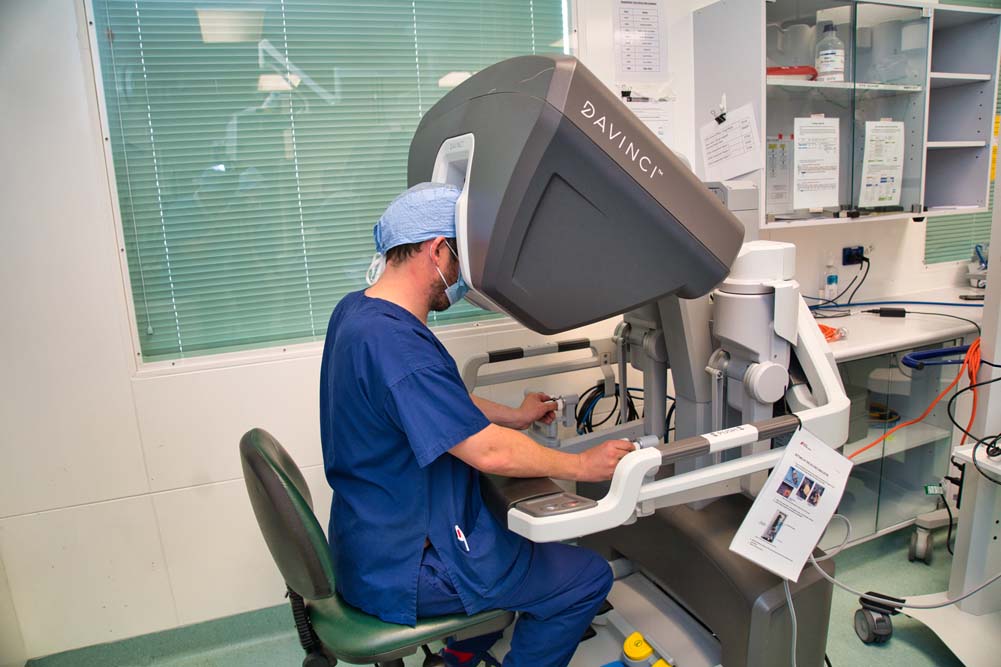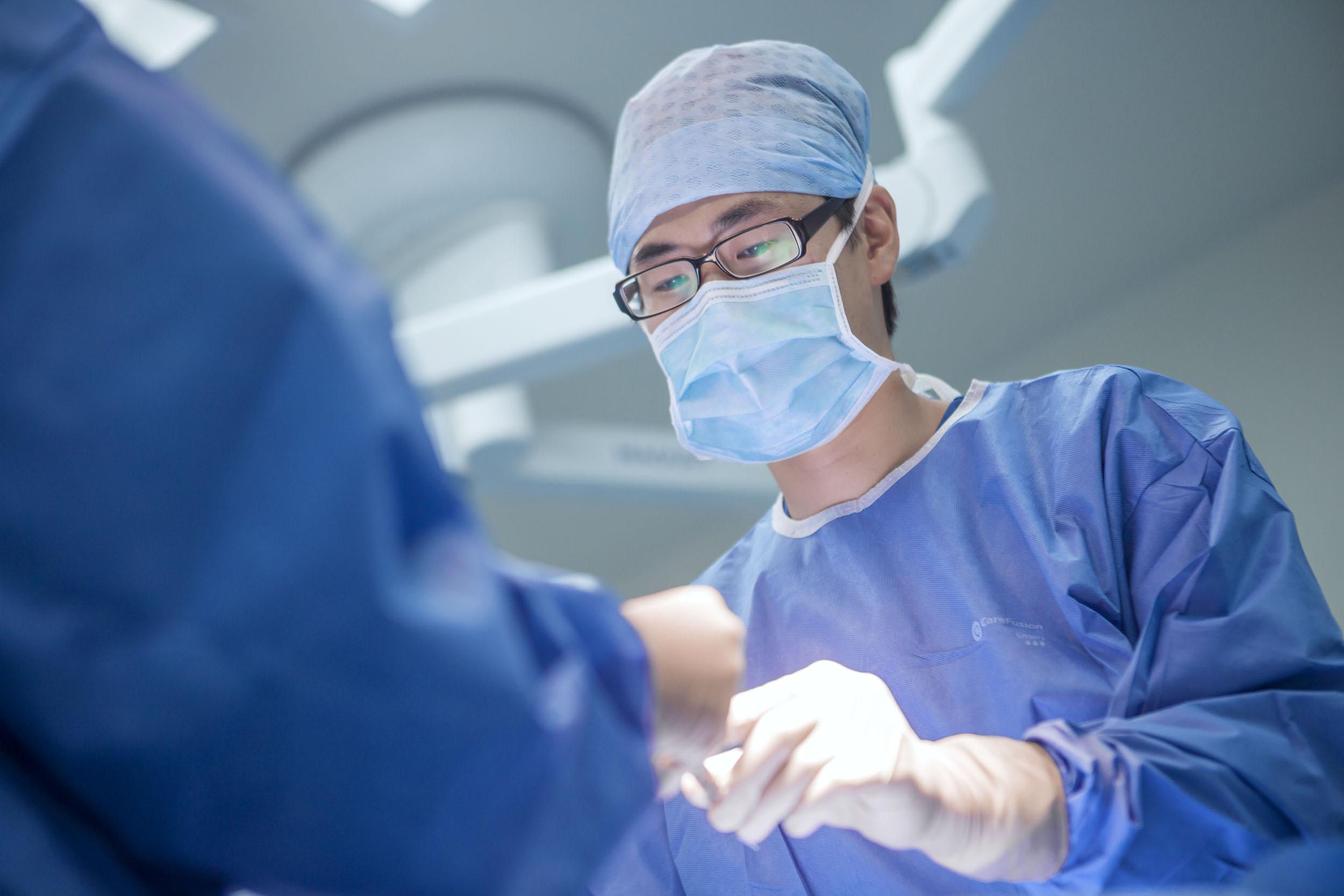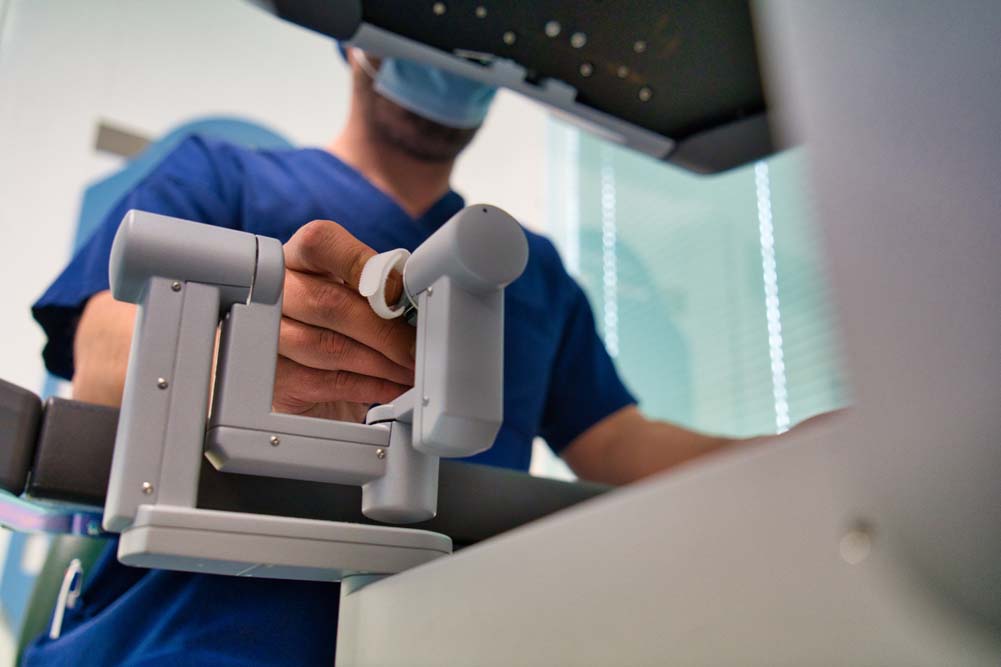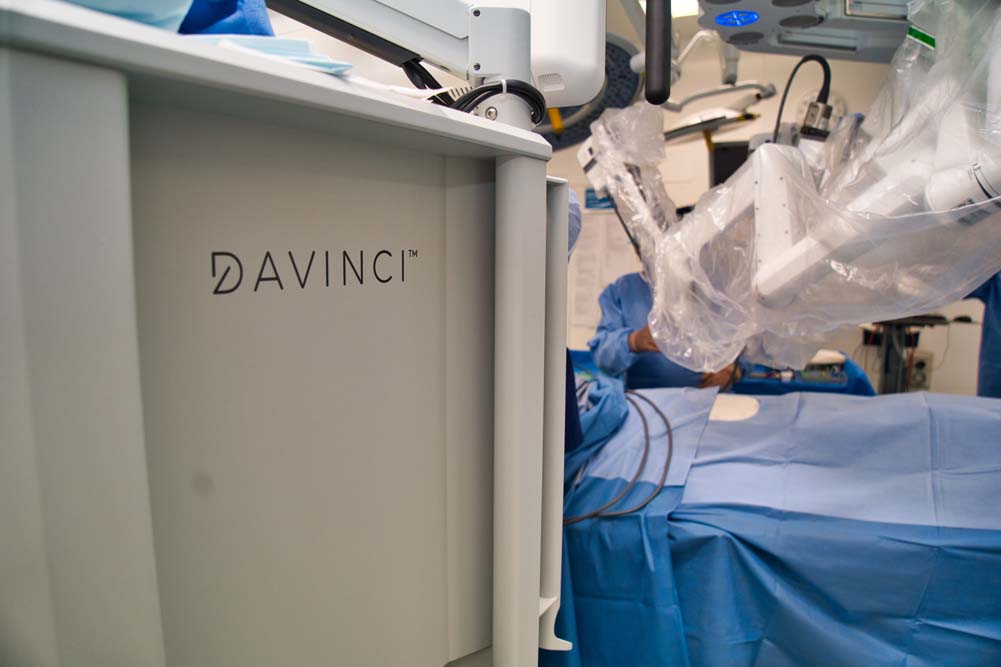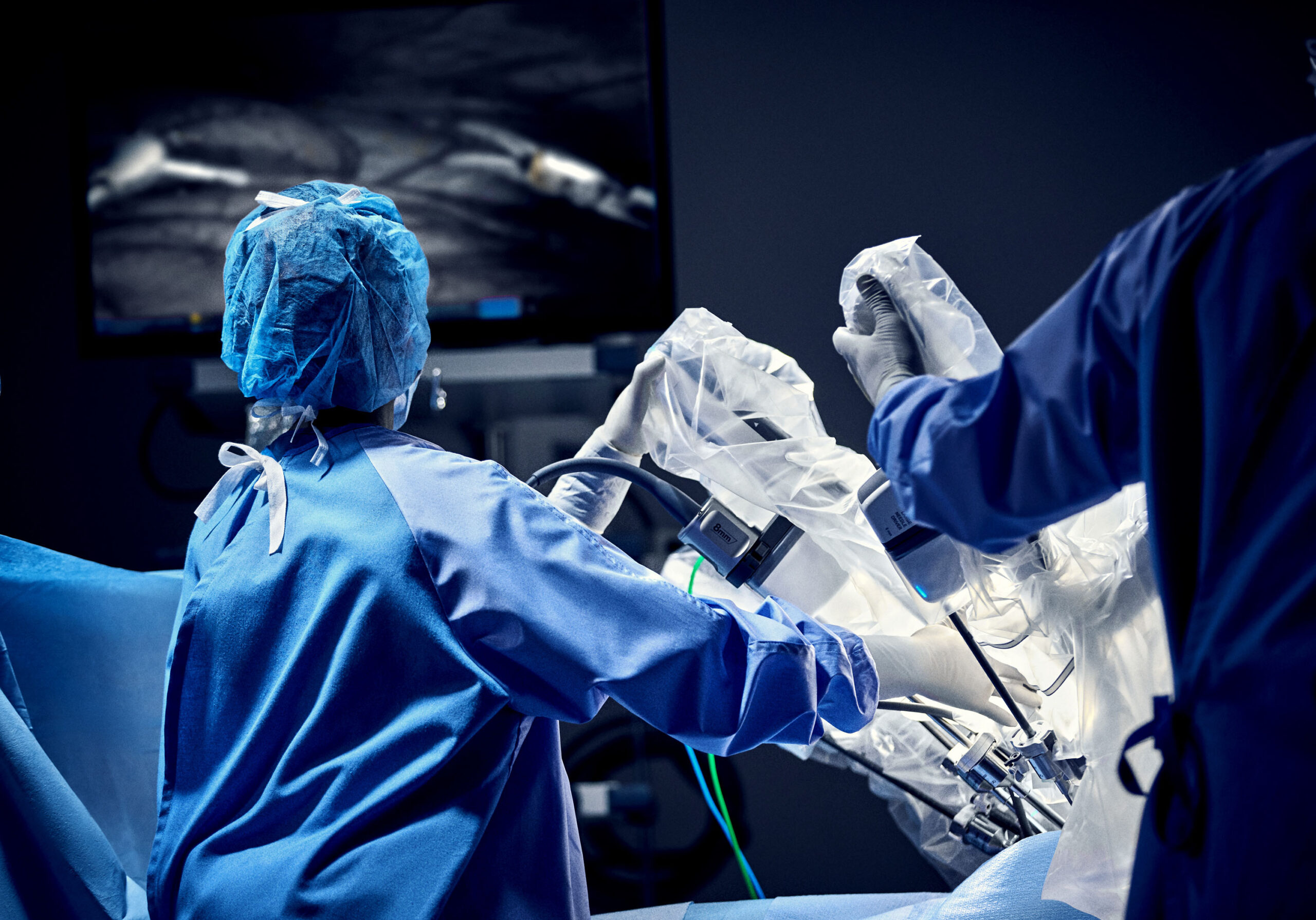Day of the procedure
Your Specialist will review your medical history and discuss the surgery with you to confirm your consent.
A Stoma Specialist Nurse will help you decide on the ideal site for your stoma. They will mark this area on your abdomen. It’s important this isn’t washed off as the specialist will need to reference the site during surgery.
An anaesthetist will discuss your options of anaesthetic, whether that be general or spinal. They will also discuss your pain relief plan for your post-operative recovery.
You may be provided with a pair of TED stockings to wear and you may be given a heparin injection to thin your blood. These help prevent blood clots, your medical team will decide whether you need to continue with these post-surgery.
